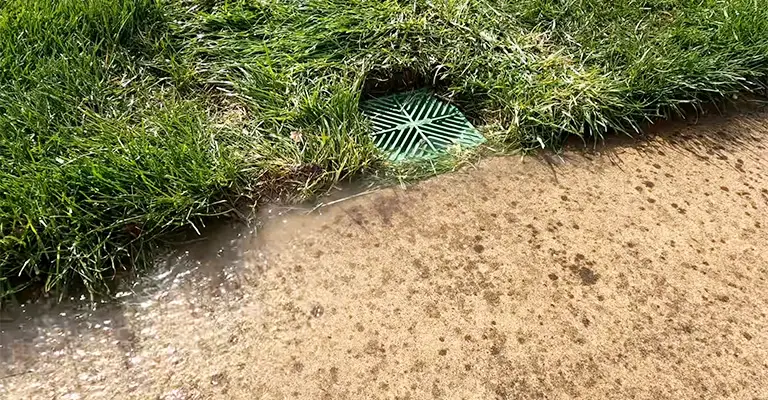Water can be both a blessing and a curse when it comes to your property.
While it is essential for the health of your lawn and plants, excessive water accumulation can lead to a myriad of issues, including erosion, basement flooding, and damage to your foundation.
If you’re facing such problems, a French drain can be a game-changer in effectively managing water runoff. But have you ever wondered just how much water a French drain can handle?
Understanding the capacity of this drainage system is crucial for designing and implementing a practical solution that can effectively mitigate water-related problems.
How Much Water Can A French Drain Handle?
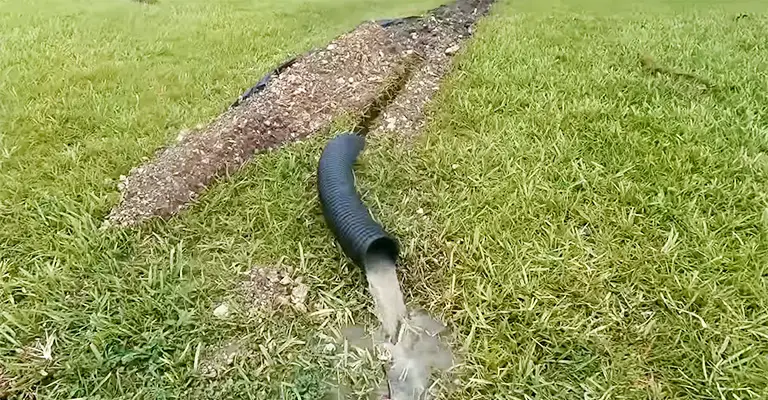
A French drain can handle 25,000 gallons of water all by itself. However, if you’re installing more than one around your home or business, you might have to purchase more than one.
The French drain is typically used in landscaping projects surrounding concrete or asphalt surfaces that won’t allow traditional exterior foundation drainage systems to function.
It can also prevent flooding from excessive rainfall without installing a costly and complex drainage system around your home.
By reading on, find out everything you need to know about installing a French drain on your property.
The French Drain
In most cases, French drains have a trench, although the design may differ. This trench is lined with gravel, and a perforated pipe is installed. The French drain can be built inside or outside the house.
A drain of this type is usually located outside. Groundwater can be drained through a French drain if you want to do this. It will also work if your soil or yard frequently has standing water after rain.
The Limitations
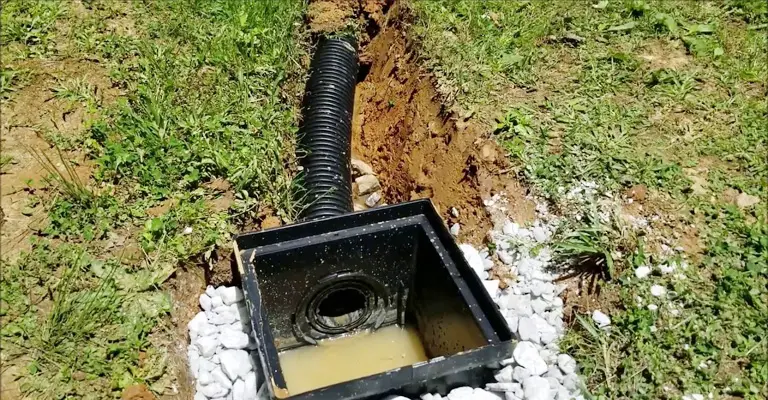
There is no question that French drains can be effective, but they can be frustrating if you’re planning on redirecting or moving vast amounts of water.
They can remove moisture from over-saturated soil, but the soil needs to be sloped substantially to facilitate drainage.
Additionally, French drains won’t be able to move water as quickly and might even become overwhelmed when heavy rainfall occurs. In addition, French drains may need to be replaced often since they are underground and, therefore, prone to getting clogged.
A Smart Investment
A French drain is an excellent investment for homes that are experiencing drainage problems, such as standing water in the yard or a basement full of water.
Ignoring these issues will lead to more damage, posing a significant danger to you, your family, and your home. You can also increase the value of your home with a French drain.
Do French Drains Work In Heavy Rain?
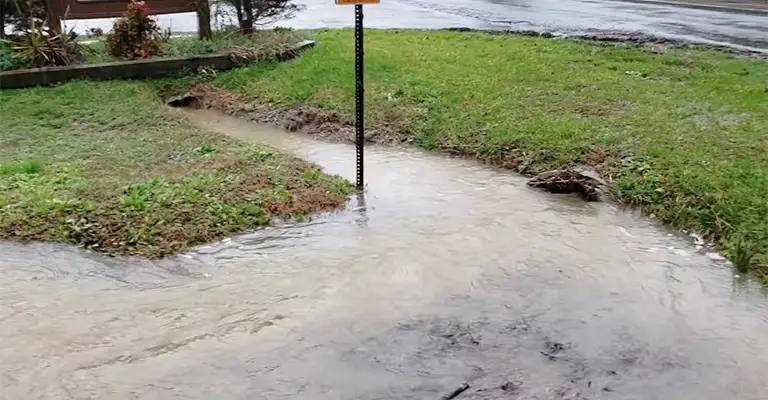
Because French drains are perforated pipes laid in ditches, they require a greater area than catch basins.
A storm drain, much like a catch basin, will move water when it rains heavily. As a result of perforations, the perforations allow water to seep into the ground during light or steady rains.
Typically, French drains are selected for areas with dry soil and clay that contribute to high surface water runoff.
While they are more expensive to install than catch basins, less maintenance is required over time. Aside from handling runoff from torrential rains or flooding, they also tend to be more efficient.
Tips for French Drain Installation
The smaller the trench, the more money you will save. To ensure that the trench you need is the right size, only cut it down to the length you need.
You may also request the help of a backhoe operator if you need help digging. An option that might be more affordable is to rent a trencher machine instead.
If you are unsure what to do, you might want to speak to a surveyor before installing a French drain. Professional assistance can be hired if you believe you cannot perform the task yourself.
It is crucial to do this so that the French drain is able to function properly. The installation must be done correctly beforehand so that you won’t have the same problem in the future.
Should There Be Standing Water In A French Drain?
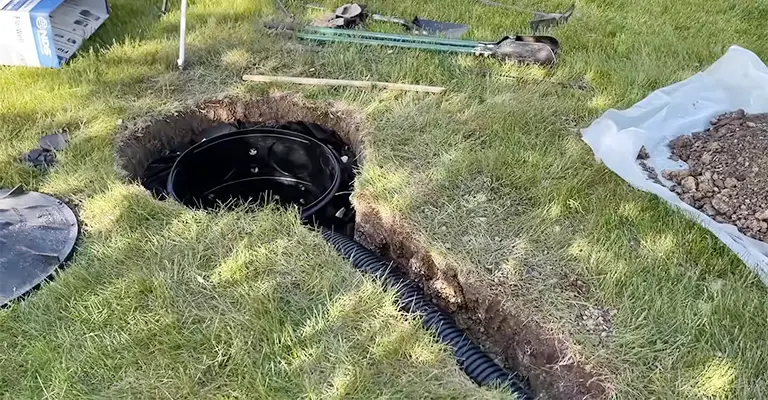
Clogged storm drains look like standing water in the channel or flooding over the pipe. Nevertheless, if the gravel is dry and if there are no pools of water in the ditch, then the drain, or at least that section, is fine.
French Drain Cost
When undertaking a project, you should estimate the cost of installing a French drain before you start. Besides the piping and aggregate, fabric, couplers, and end caps, the materials used in French drains are the primary drivers of their costs.
As well as permits, fees, or equipment rentals, other elements may also need to be considered.
In general, a traditional French drain costs $20 to $30 per foot, but home-built French drains may also require equipment rentals, such as trenchers and compactors.
Calculate how many of each component you need to make a cost estimate. Measurement of the distance between the water collection point and the discharge outlet can be used to determine the length of the pipe.
A similar process can be used to determine fabric. By multiplying the length of the trench by the width and the depth needed to completely cover the pipe, we can estimate the amount of gravel required.
Add the pipe, fabric, and aggregate totals to calculate the initial installation cost. It is also vital to consider labor costs when estimating a French drain installation cost.
There are drainage experts available for hire, and they charge a variety of prices, but a DIY project can be evaluated based on cost and benefit.
The Importance of a Properly Installed French Drain
To achieve a successful French drainage system, you need to install it correctly. Drain systems can be clogged by poor installation. Consequently, the pooling may cause major problems.
You should avoid making the following common mistakes when installing French drains. When installing a drain system, you should always ensure it is sloped. Using this method, water will flow out of the French drain by gravity.
It is not uncommon for homeowners to install a completely flat French drain. Consequently, the process of moving water through the system requires more energy. This is why it is not able to properly remove subsurface water.
Lastly, you should avoid low spots and dips in a French drain. Pools can form in these areas.
Final Words
Shortly put, a French drain helps eliminate drainage problems around the house. You can do the project yourself reasonably quickly but be sure to follow the correct steps to avoid common mistakes.
Keeping your French drain system in tip-top shape requires regular maintenance and inspections. Keeping the water out of your home with a little effort will prevent expensive water damage in the future.

